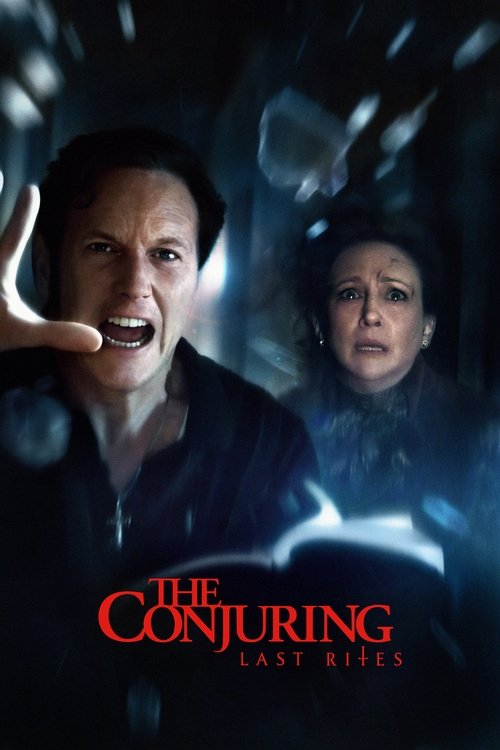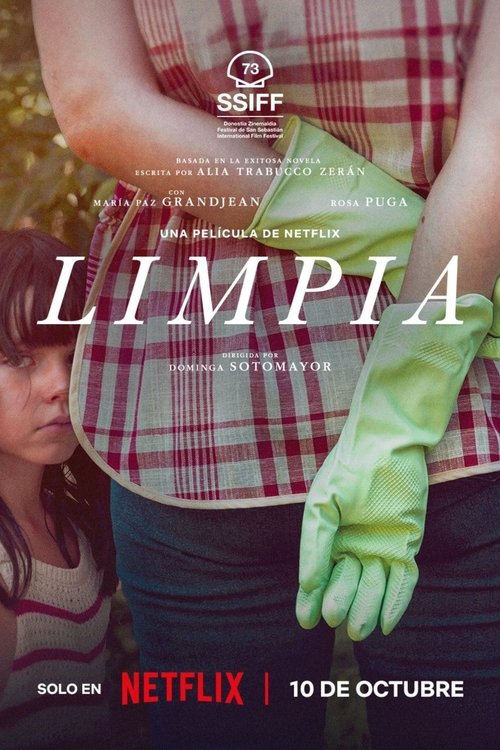
Ask Your Own Question
What is the plot?
As the sun casts its warm glow over the crumbling Belgian house, Wim and Floor step into the serene, sunwashed rooms, their presence immediately filling the space with a sense of intimacy. The film begins without a specific date or time, focusing solely on the couple's natural interaction. The absence of dialogue or narrative structure allows the viewer to immerse themselves in the unfolding moments, as if they are witnessing a private, unscripted encounter.
The house, with its weathered walls and sunlit windows, serves as a backdrop for Wim and Floor's afternoon together. The camera follows them as they move through the rooms, capturing every gesture, every glance, and every touch. The atmosphere is tranquil, with the only sounds being the soft rustling of clothes and the gentle creaking of old wooden floors.
As they explore the house, Wim and Floor begin to engage in a slow, sensual dance. Their movements are natural and unforced, reflecting the ease and comfort of a real-life couple. The camera lingers on their faces, capturing the subtle expressions of affection and desire. The lack of fast-paced editing allows the viewer to absorb the build-up of intimacy, feeling the tension and anticipation as it grows.
The film is devoid of significant objects or symbolic items, focusing instead on the couple's non-verbal communication. Their connection is conveyed through body language, gentle touches, and the way they look at each other. The absence of dialogue adds to the intimacy, making the viewer feel as though they are part of a private moment.
As the afternoon progresses, Wim and Floor's interaction becomes more intimate. The camera continues to follow them, capturing every moment without interruption. The slow pace of the film allows the viewer to appreciate the beauty of their connection, the way they move together, and the way they respond to each other's presence.
The climax of the film is not a dramatic event but a culmination of the couple's intimacy. The scenes are sensual and erotic, yet they maintain a sense of warmth and connection. The focus is on the natural progression of their relationship, rather than a scripted climax.
As the afternoon winds down, the film concludes without a dramatic resolution or narrative closure. The final scenes maintain the slow, intimate tone, emphasizing the sweetness and sexiness of Wim and Floor's connection. The camera lingers on them as they relax together, the warmth of the sun still present in the room.
In the end, "Skin. Like. Sun." is not about plot twists or dramatic confrontations but about the beauty of a real-life couple's intimate connection. The film invites the viewer to participate in their private moment, to appreciate the slowness and naturalness of their interaction. As the credits roll, the viewer is left with a sense of warmth and intimacy, having witnessed a genuine and unscripted moment between two people.
The film's conclusion is a reflection of its beginning, a celebration of the beauty in everyday intimacy. There are no deaths, confrontations, or revelations; just the simple, yet profound, connection between Wim and Floor. The film ends as quietly as it began, leaving the viewer with a lasting impression of the couple's afternoon together in the sunlit Belgian house.
What is the ending?
In the ending of "Skin. Like. Sun.", the main character, a young girl named Talia, confronts her fears and the reality of her life. She ultimately makes a choice that leads her to a new understanding of herself and her relationships. The film concludes with a sense of hope and renewal as Talia embraces her identity and the connections she has formed.
As the final scenes unfold, Talia stands at a crossroads, both literally and metaphorically. The sun sets in the background, casting a warm glow that contrasts with the emotional turmoil she has faced throughout the film. She reflects on her journey, the struggles with her family, and the friendships that have shaped her.
In a pivotal moment, Talia reaches out to her estranged mother, seeking reconciliation. The tension is palpable as they share a heartfelt conversation, revealing their vulnerabilities and the pain that has kept them apart. Talia's mother, initially resistant, begins to soften as she sees her daughter's determination to bridge the gap between them.
Meanwhile, Talia's relationship with her friends also comes to a head. They gather at a familiar spot, a place that holds memories of both joy and conflict. As they talk, the atmosphere shifts from one of uncertainty to camaraderie. Talia expresses her desire to move forward, and her friends rally around her, offering support and understanding. This moment signifies a turning point, as they collectively acknowledge their past mistakes and commit to being there for one another.
The film closes with Talia walking away from the gathering, a sense of peace washing over her. The sun dips below the horizon, symbolizing the end of one chapter and the beginning of another. Talia's journey has not been easy, but she emerges stronger, ready to face whatever comes next with a renewed sense of self and a deeper connection to those she loves.
In summary, the ending of "Skin. Like. Sun." encapsulates Talia's growth and the importance of relationships in overcoming personal struggles. Each character's fate is intertwined with Talia's, as they all find a sense of closure and hope for the future.
Is there a post-credit scene?
The movie "Skin. Like. Sun." produced in 2009 does not have a post-credit scene. The film concludes its narrative without any additional scenes or content after the credits roll. The story wraps up with a focus on the emotional and thematic elements explored throughout the film, leaving the audience to reflect on the characters' journeys and the impact of their experiences.
What motivates the main character, a young girl named Skin, to explore her identity throughout the film?
Skin is driven by a deep desire to understand her place in the world and to connect with her own identity. As she navigates her adolescence, she grapples with the complexities of her family dynamics, societal expectations, and her own self-image, which leads her to seek out experiences that challenge her understanding of beauty and acceptance.
How does Skin's relationship with her mother influence her actions and decisions in the film?
Skin's relationship with her mother is fraught with tension and misunderstanding. Her mother, who has her own struggles with self-acceptance, often projects her insecurities onto Skin. This dynamic creates a push-pull effect where Skin seeks approval and validation from her mother while simultaneously rebelling against her expectations, which ultimately shapes her journey of self-discovery.
What role does the character of the boy Skin befriends play in her development?
The boy Skin befriends serves as a catalyst for her exploration of love and acceptance. He represents a world outside of her familial constraints, offering her a glimpse of freedom and the possibility of genuine connection. Their relationship challenges Skin to confront her insecurities and encourages her to embrace her individuality, which is pivotal in her emotional growth.
How does Skin's environment reflect her internal struggles throughout the film?
Skin's environment is depicted as both beautiful and harsh, mirroring her internal conflicts. The contrasting settings, from vibrant outdoor scenes to claustrophobic indoor spaces, symbolize her feelings of entrapment and longing for freedom. This visual representation of her surroundings enhances the emotional weight of her journey, as she seeks to reconcile her external reality with her internal desires.
What significant events lead to Skin's turning point in the story?
Several key events lead to Skin's turning point, including a confrontation with her mother about her self-image, a pivotal moment of vulnerability with her friend, and an experience that forces her to confront societal beauty standards. These moments collectively push Skin to reevaluate her understanding of herself and her worth, ultimately leading her to embrace her identity more fully.
Is this family friendly?
"Skin. Like. Sun." is a film that explores complex themes and emotions, and while it may not be overtly graphic, it does contain elements that could be considered objectionable or upsetting for children or sensitive viewers.
-
Themes of Identity and Belonging: The film delves into the struggles of self-identity and the quest for acceptance, which may resonate deeply but could also evoke feelings of discomfort or sadness.
-
Emotional Turmoil: Characters experience significant emotional distress, including feelings of isolation and longing, which may be intense for younger audiences.
-
Family Dynamics: There are scenes that depict strained family relationships and conflicts, which could be upsetting for viewers sensitive to familial issues.
-
Visual Imagery: The film employs striking visual metaphors that may be interpreted in various ways, potentially leading to confusion or discomfort for younger viewers.
-
Existential Themes: The exploration of existential questions and the human condition may be challenging for children to grasp, leading to feelings of unease.
Overall, while the film is not explicitly inappropriate, its emotional depth and thematic complexity may not be suitable for all audiences, particularly younger children or those who are sensitive to such topics.











